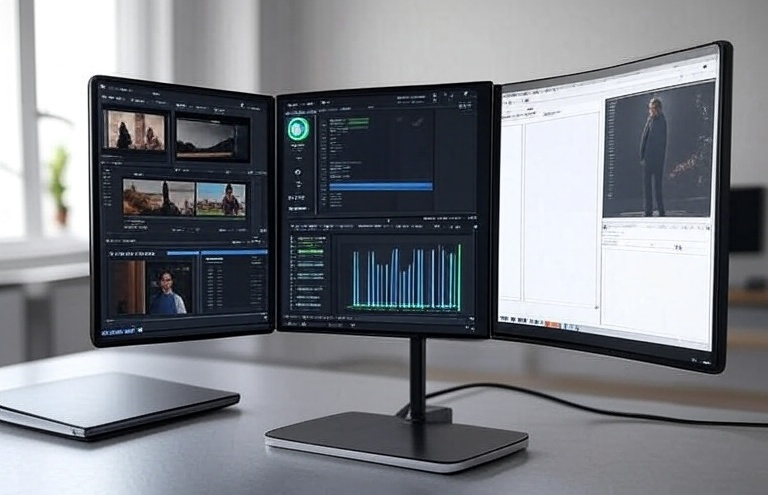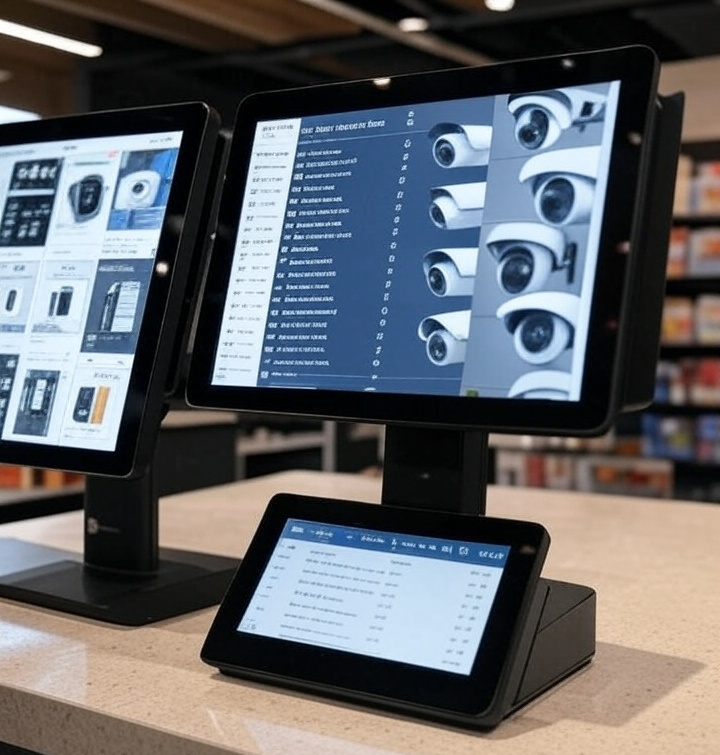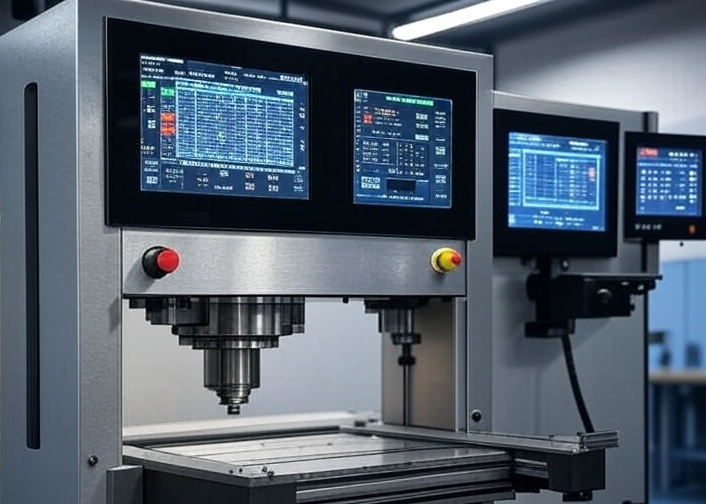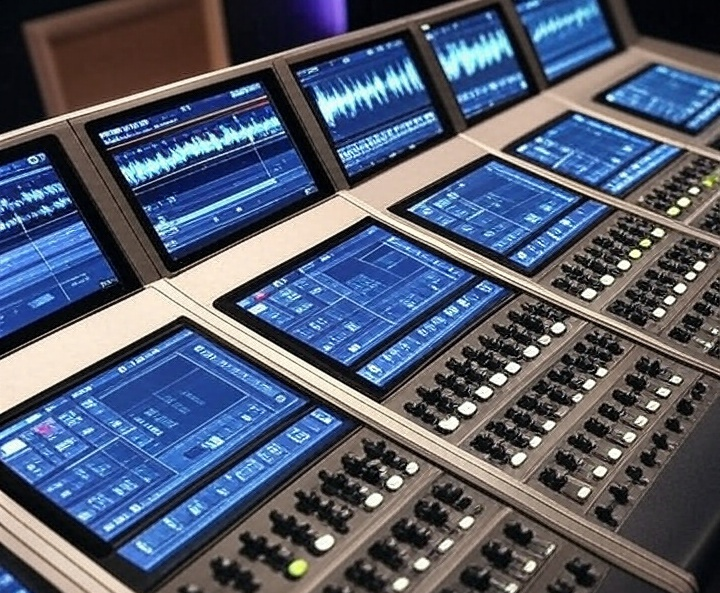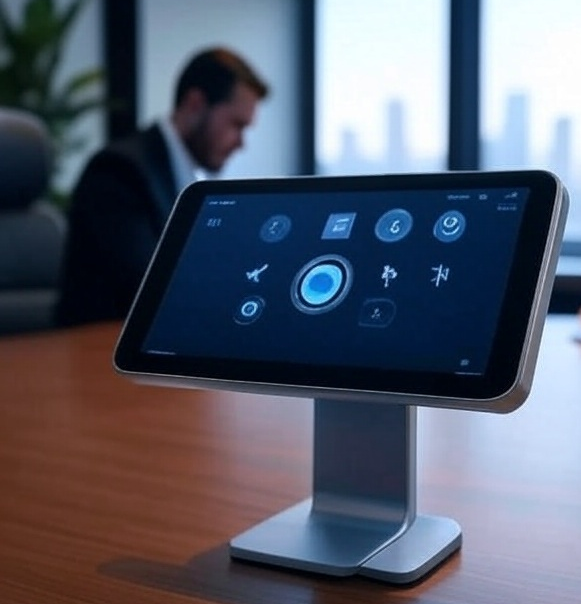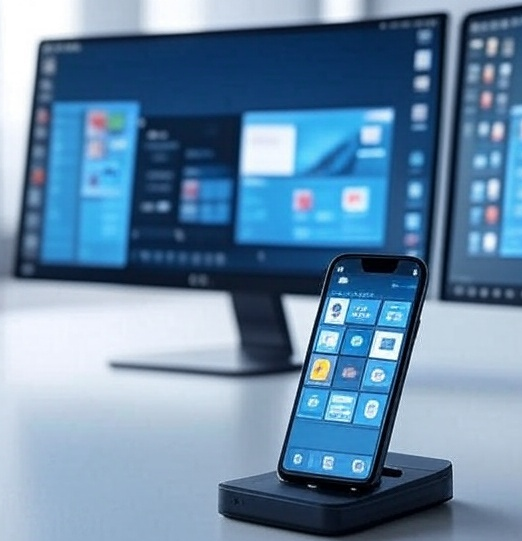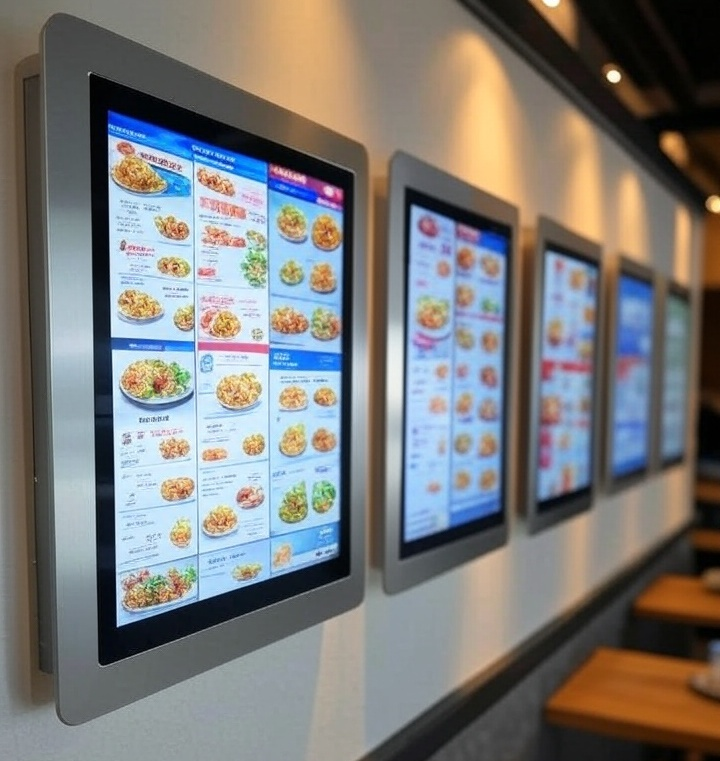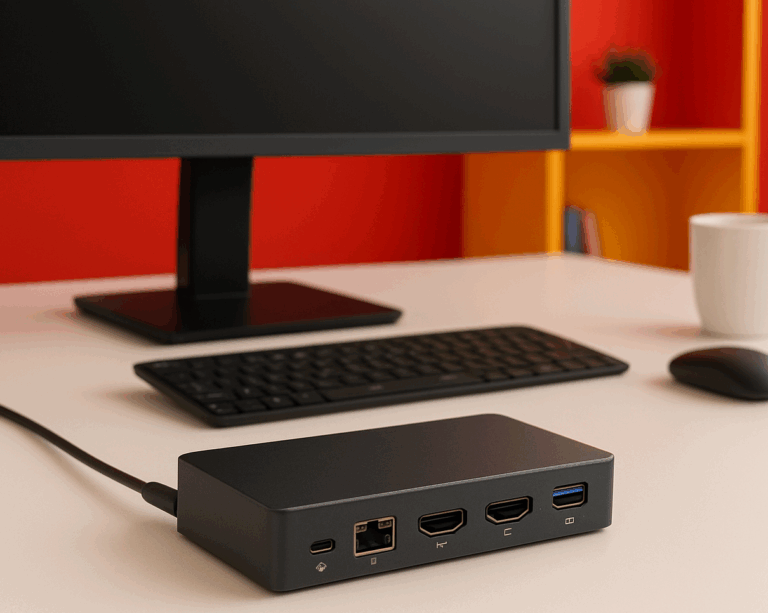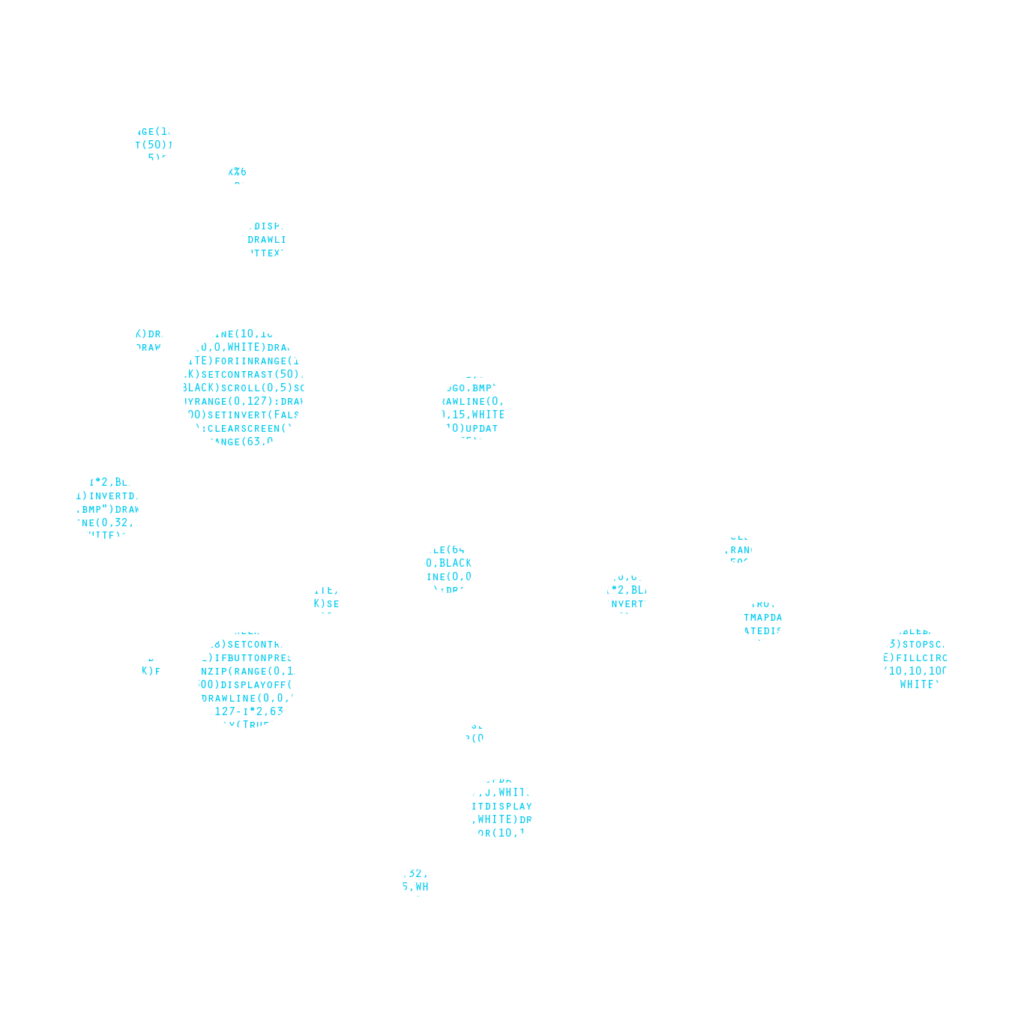
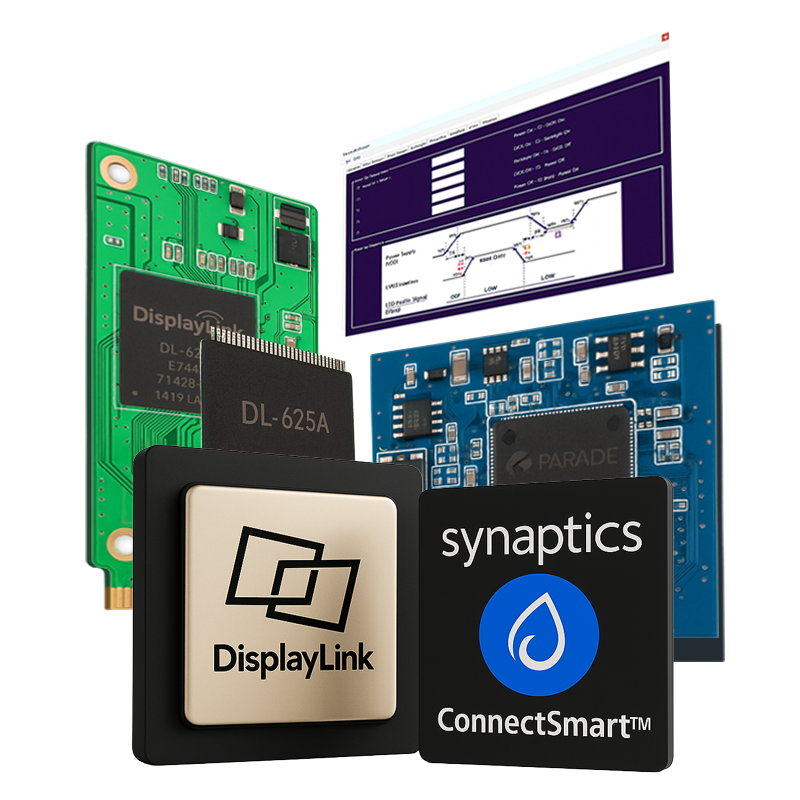
Products
Control Solutions
Scaler boards with HDMI and DP input or forward-looking USB graphics technology, combined with DP-MST or USB-C alternate mode and PD (Power Delivery) – we offer display control solutions for your application as well.
Display Controls
LCD-TFTs Controls and Technologies
Scaler-Boards
The control of LCD-TFT displays began in the 1990s with scaler boards that converted analog video signals, such as VGA, into TTL and later LVDS signals. These converter boards were crucial for the transition from analog CRT monitors to digital LCD-TFT displays. In the 2000s, digital interfaces like DVI and HDMI enabled higher resolutions. In 2006, DisplayPort (DP) was introduced, with its packet-based protocol supporting multimonitor configurations, unlike the stream-based format of HDMI, leading to the introduction of DP-MST in 2010. Despite the development of more powerful video interfaces, adapting or converting common video signals to various display interfaces remains necessary. These control units are still referred to as scaler boards or display controller boards today.
Hardware
We use scaler SOCs from well-known manufacturers in various performance classes in order to best meet the requirements of our customers.
| Funktion | Single Output / up to 1K | Dual-Output / up to 2K |
|---|---|---|
| Input Interfaces | TMDS (HDMI/DVI), DP, VGA | TMDS (HDMI/DVI), DP, VGA |
| Supported Resolutions | 640×480 – 1920×1080/1200 | 640×480 – 2560×1440/1600 |
| Output Interfaces | LVDS eDP | LVDS eDP |
| Non-linear Scaling | ✔ | ✔ |
| Embedded OSD | ✔ | ✔ |
| DDC/CI Support for OSD Functionality | ✔ | ✔ |
| Audio Output | ✔ | ✔ |
Perfecting Scaler Board Design with Tailored Software Solutions
At Display & Control, we draw on extensive experience to provide advanced software that optimizes the design-in process for scaler boards. Our solutions enable seamless, independent control, enhancing performance and longevity without dependencies or additional costs. We aim to support your project goals with efficient, reliable software tailored to your needs.
Perfecting Scaler Board Design with Tailored Software Solutions
At Display & Control, we draw on extensive experience to provide advanced software that optimizes the design-in process for scaler boards. Our solutions enable seamless, independent control, enhancing performance and longevity without dependencies or additional costs. We aim to support your project goals with efficient, reliable software tailored to your needs.
Data File Creator
This module generates the so-called Panel Data File from the specific panel timing, backlight, and power-on parameters.
Firmware Packer
The customer uses the firmware packer to create the new firmware from the panel data file and a scaler-specific base file.
Firmware-Programmer
This programming module is equally suitable for development and production and ensures VESA-compliant serial number assignment. The programming hardware is an inexpensive USB-to-SPI bridge (< US$ 20), which enables a programming time of less than 5 seconds.
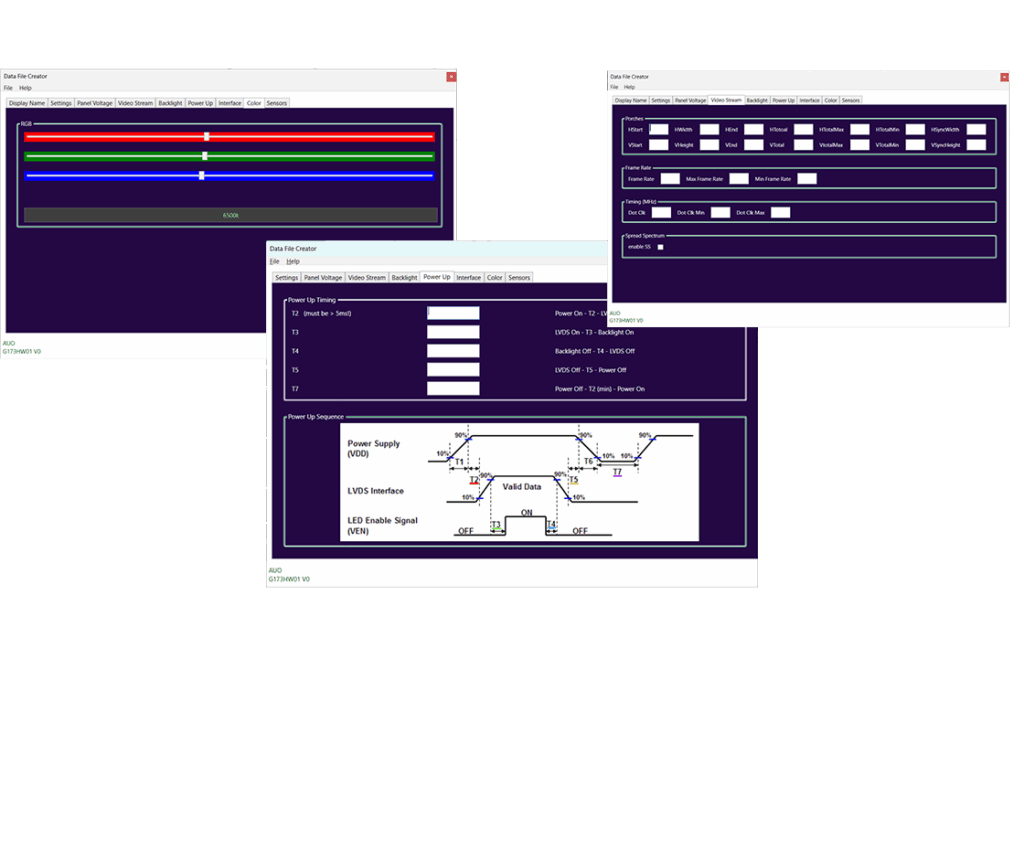
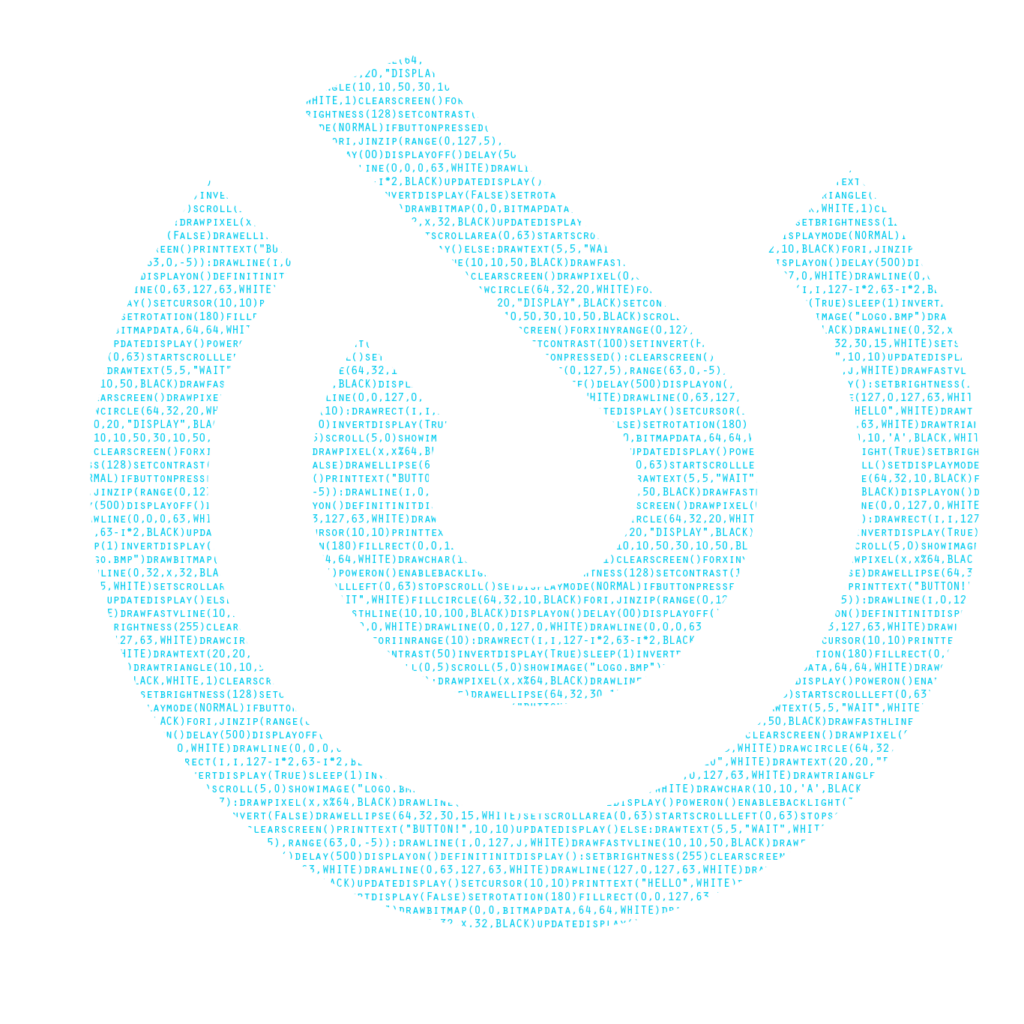

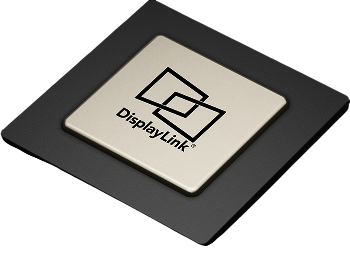
The world's most trusted and reliable USB graphics SoCs
Transformative DisplayLink-Powered Applications For Every Workflow And For Every Environment
DisplayLink technology enables flexible display expansion through a single USB connection, supporting multiple monitors with plug-and-play simplicity. It integrates with various operating systems like Windows, Ubuntu, macOS, ChromeOS and Android, and is compatible with hardware from Intel, Apple, AMD, Qualcomm, and ARM-based SoCs, while also offering features like Ethernet, audio, and USB hubs.
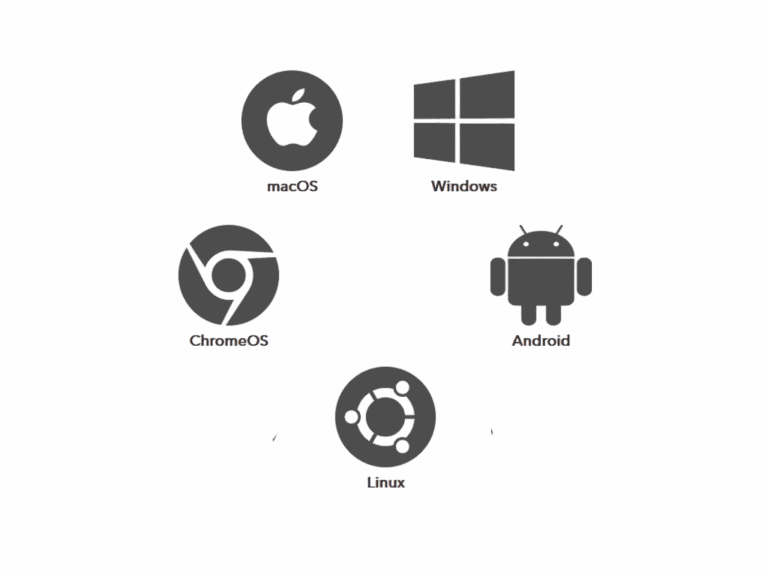
DisplayLink drivers enable USB-based display expansion with tailored options. “Individual installers” support macOS, Windows, ChromeOS, Linux, and Android for diverse systems. For businesses, the Windows “Corporate Installer” offers a single software package that simplifies IT deployments, supporting all DisplayLink products seamlessly and streamlining installations across docks and adapters.
Elevate Workspaces and HMI-Applications with DisplayLink-Powered Solutions
This technology significantly enhances productivity by allowing multi-display setups without hardware constraints. Additionally, its cost-efficient and sustainable design reduces the need for frequent upgrades, extending the life of existing devices.
Start with the DL-4000 family, offering seamless USB connectivity for smaller LCD-TFT displays up to 1920×1200, ideal for compact setups.
Elevate to the DL-7000 family, supporting up to four 4K displays at 120Hz, with 2.5G Ethernet, smart host switching and IoT connectivity, perfect for high-performance multi-monitor environments.
We integrate DisplayLink technology to deliver seamless display expansion over USB, transforming how you work.
-
USB Monitors
DisplayLink-enabled USB monitors provide flexible display expansion via a single USB connection, offering compact, bus-powered models for mobile professionals and larger monitors with integrated docking features like Ethernet, audio, and USB hubs.
-
Point of Sale
Enhance POS systems with DisplayLink’s low-cost, low-power architecture, supporting customer-facing displays and dual-display setups for POS/ECR and handheld cradles, driving up to FHD resolutions icluding touch functionality over a single USB cable.
-
Industrial
Power rugged docking and display solutions with DisplayLink technology, for in-vehicle and on-counter deployments, ensuring durability in harsh environments like factories or fields.
-
Multi-Monitor Applications
Power rugged docking and display solutions with DisplayLink technology, for in-vehicle and on-counter deployments, ensuring durability in harsh environments like factories or fields.
-
Meeting Room Solutions
Video, sound, and lighting effect mixing consoles manage live audiovisual elements. Multiple displays are needed to monitor and control these tasks simultaneously—e.g., video outputs, audio levels, or lighting cues—ensuring precision in complex live productions.
-
Mobile Phone Productivity
Transform smartphones into full workstations with DisplayLink, connecting multiple displays and peripherals via USB, as showcased at CES 2025, offering unmatched portability and productivity for Android devices.
-
Digital Signage
Deploy versatile signage solutions with DisplayLink’s media-agnostic architecture, supporting multiple displays over Ethernet or USB across retail, education, hospitality, and healthcare, compatible with Windows, Linux, and Android.
-
GPU-AgnosticTM Docking Stations:
DisplayLink-powered docking stations offer seamless multi-4K display support across Intel, AMD, Nvidia, Qualcomm, or Apple silicon, enhancing productivity without requiring platform upgrades, maximizing ROI.
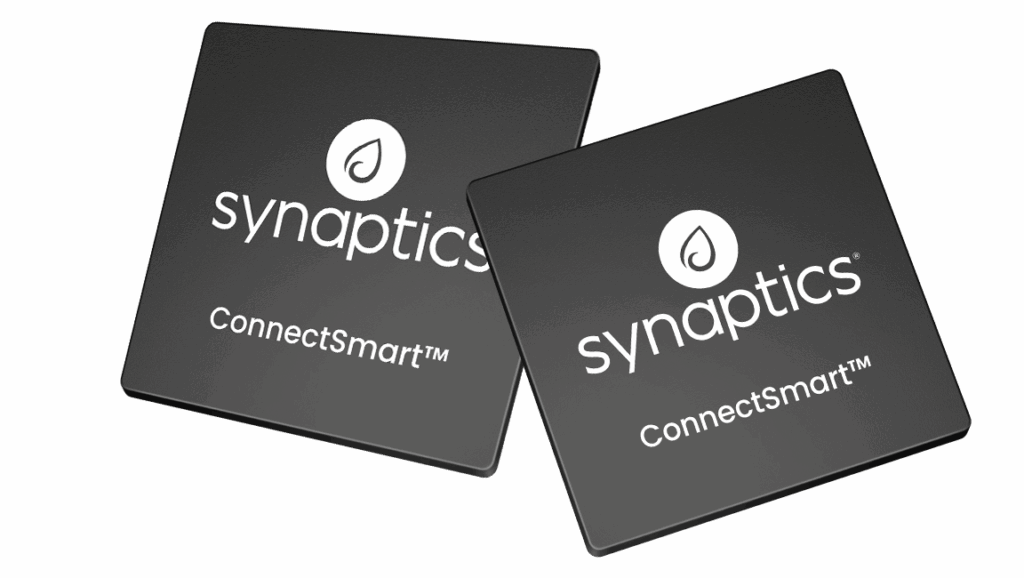
ConnectSmartTM Video Interface
Seamlessly Bridge High-Performance Digital Protocols
Synaptics’ ConnectSmart technology complements and extends DisplayLink technology by providing a robust suite of high-speed video, audio, and data connectivity IC solutions. These IC families, designed for applications like PC docks, dongles, and protocol converters, leverage DisplayPort Multi-Stream Transport (MST) to enable multiple independent
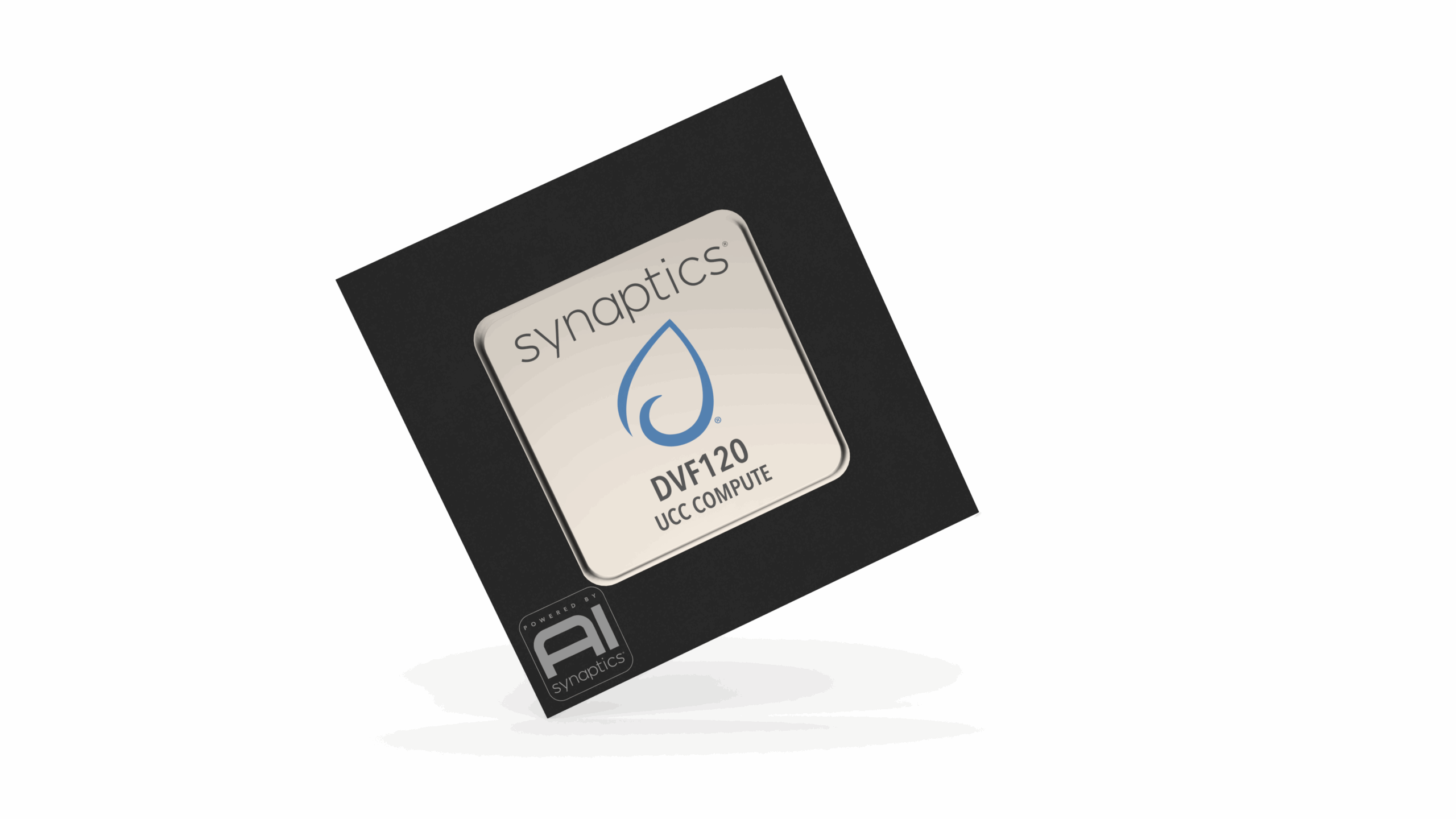
video streams over a single connection, enhancing multi-monitor setups. With support for USB-C, advanced security, and ultra-low power consumption, ConnectSmart ICs expand DisplayLink’s capabilities, offering seamless integration and scalability for diverse, high-performance display environments.
DisplayPort Multi-Stream
Elevate Productivity with DisplayPort Multi-Stream Technology
The control of several displays via just one connection is of great importance for numerous applications and has therefore established itself both as a hub structure and as daisy-chaining. We use Synaptics’ ConnectSmart(TM) products in our developments in order to be able to map both structures with all their advantages.

For multi-monitor applications, we combine our scaler designs with the VMM52xx and VMM53xx families from Synaptics.
2-/3-Port Multi-Stream Hub for Dongles/Hubs
• Supports multiple video streams from host
• 2 and 4-lanes of video
• DP HBR3 receiver port
• 2 DP 1.4/DP++ transmitter ports
• DSC decoder per output port
• FEC on input and output ports
• Synaptics patented dual 4K 60Hz outputs
• Firmware upgradeable over I2C or AUX
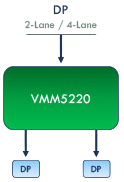
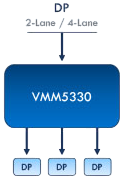
USB-C Alternate Mode
Elevate Connectivity with USB-C Alternate Mode
USB-C Alternate Mode enables the simultaneous transmission of video data via DisplayPort-MST (e.g. two 4K or four 1080p displays with DP 1.4) and USB data via a single USB-C cable. USB 3.2 Gen 1 (5 Gbit/s) or Gen 2 (10 Gbit/s) and USB 2.0 High-Speed (480 Mbit/s) are transmitted in parallel to a DP-MST signal with 2 lanes. This parallel use of video and data transmission optimizes multi-monitor setups and peripherals, simplifies connectivity and increases efficiency.

In order to use the alternate mode and USB optimally and cost-effectively, we use the VMM8xxx family of Synaptics ConnectSmart™ video interfaces with the following features.
• 2/4-lanes of video and 2-lanes of USB data from host
• Multi-stream video, audio and data
• Ultra-low power
• USB-C receiver port with integrated De-Mux
• DP 1.4/DP++ transmitter port
• HDMI 2.1 transmitter port
• USB3.1 re-timer transmitter/receiver port
• DSC1.2a decoded / Pass-through output
• Secure FW update, Secure boot
• 8K 60Hz or 4K 120Hz output
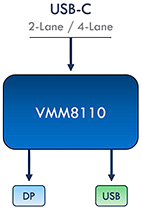
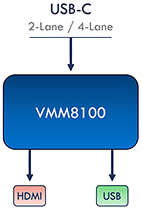
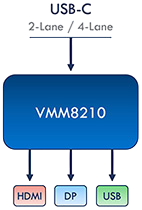
Background Knowlege:
From the Intel graphics “HD Graphics 4000/2500 (3rd Gen, Ivy Bridge) in April 2012, 4 FHD displays are supported by the DP. Support for up to two 4K displays was added later.
USB-C PD
USB-C Power Delivery (PD) is a standard for power supply via USB-C cables. It is divided into two power ranges: Standard Power Range (SPR) with up to 100 watts and Extended Power Range (EPR) with up to 240 watts. It uses the Configuration Channel (CC) in the USB-C connector to dynamically negotiate voltage and current between devices. The power supply is bidirectional, so that both the USB host, e.g. a notebook, and a USB device, e.g. a monitor, can be supplied.
Programmable Power Supply (PPS) was also introduced with PD3.0. This allows variable voltages (3-21 V in 20 mV steps), e.g. 12 V
The various PD standards are shown in table form below:
| PD-Standard | Einführung | Leistungsbereich | Spannungsstufen | Max. Strom | PPS-Unterstützung |
|---|---|---|---|---|---|
| PD 2.0 | 2014 | SPR: Bis 100 W | 5 V, 9 V, 15 V, 20 V | 5 A | Nein |
| PD 3.0 | 2015 | SPR: Bis 100 W | 5 V, 9 V, 15 V, 20 V, PPS (3–21 V) | 5 A | Ja (3–21 V, 20 mV-Schritte) |
| PD 3.1 | 2021 | SPR: Bis 100 W EPR: Bis 240 W | SPR: 5 V, 9 V, 15 V, 20 V, PPS (3–21 V) EPR: 28 V, 36 V, 48 V | 5 A | Ja (SPR: 3–21 V; EPR: bis 48 V) |
With USB-C Power Delivery (PD), both conventional scaler boards and USB graphics solutions (DisplayLink), including connected displays, can be supplied with power and controlled via a single cable. This opens up innovative operating and visualization concepts for modern multi-monitor setups and flexible device integration
One cable, unlimited possibilities – for maximum flexibility and innovation!
Do you have Questions?
Do you have questions?
Do you need a display controller specifically tailored to your application?
Just send us a message or give us a call.
Your requirements are our priority – we look forward to working with you.

